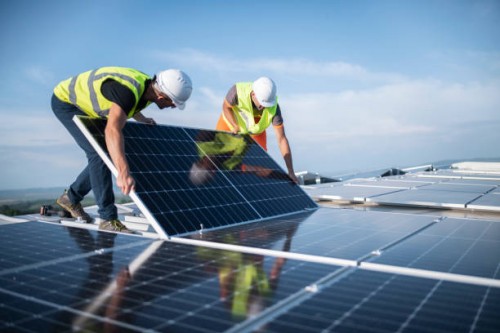Best Source for B2B Industry Trends, News and Updates

1. United States Relies on Southeast Asia
In 2024, the U.S. imported about 54.3 gigawatts of solar panels, enough to power millions of homes, mostly from Southeast Asia: Vietnam, Thailand, Malaysia, and Cambodia. These figures are part of broader solar panel import statistics 2024, which highlight America’s shifting sourcing strategy due to tariffs. Of these, Vietnam led with around 19.3 GW, followed by Thailand (12.9 GW), Malaysia (7.6 GW) and Cambodia (4.6 GW). These countries act as manufacturing hubs, often owned or supported by Chinese solar companies. They help the U.S. avoid direct Chinese imports due to tariffs.
2. Rising Imports and the Impact of Tariffs on the Solar Industry
Recent U.S. tariffs on Southeast Asian panels have changed import patterns. Between November 2024 and May 2025, solar shipments from Vietnam, Malaysia, Thailand, and Cambodia dropped by about 33%, while imports from Indonesia and Laos increased from under 1% to almost 29% of U.S. imports. This shift shows companies are moving factories to places like Indonesia and Laos to escape tariffs.
3. China’s Global Export Focus
China still dominates the global solar industry. It makes around 77–80% of solar panels and key parts like polysilicon. Solar Power World. But strict U.S. and European tariffs have pushed Chinese firms to focus their exports on Asia, Africa, and the Middle East. Still, China’s products reach nearly every major energy market worldwide.
4. Pakistan’s solar boom
In Pakistan, solar panel imports are also booming. From China alone, Pakistan brought in $1.4 billion worth of panels in just the first half of 2024. This includes 16.6 GW of panels imported in 2024, five times the amount in 2022. As a result, solar now produces over 25% of Pakistan’s electricity.
5. India builds local industry
India is working hard to make more panels at home. As of late 2023, India could produce 37 GW of solar modules and 6 GW of cells annually. The government wants to reach 60 GW modules and 25 GW cells by end‑2025. India also has high tariffs, 40% on panels and 25% on cells to support domestic production. The Adani Group is building full‑chain factories, from ingots to cells and panels. Still, critics say domestic panels are costlier than imports, which could slow solar growth in India.
6. The global picture and why it matters
Worldwide, annual solar‑panel installations are growing rapidly: around 407–446 GW added in 2023 (Source). The U.S. imported about 55.6 GW of modules and 3.7 GW of cells in 2023. Southeast Asia (Vietnam, Malaysia, Thailand, Cambodia) supplied nearly 78–79% of those.
Imports shape markets for clean energy. The impact of tariffs on the solar industry is undeniable, reshaping manufacturing hubs and trade routes worldwide. They help countries meet solar goals today, but also mean dependence on foreign factories, trade deals, and clear supply chains. Tariffs and politics make this more complex. Still, global panel flows keep expanding.
